-
 Bitcoin
Bitcoin $108,017.2353
-0.81% -
 Ethereum
Ethereum $2,512.4118
-1.58% -
 Tether USDt
Tether USDt $1.0002
-0.03% -
 XRP
XRP $2.2174
-1.03% -
 BNB
BNB $654.8304
-0.79% -
 Solana
Solana $147.9384
-1.76% -
 USDC
USDC $1.0000
-0.01% -
 TRON
TRON $0.2841
-0.76% -
 Dogecoin
Dogecoin $0.1636
-2.09% -
 Cardano
Cardano $0.5726
-1.72% -
 Hyperliquid
Hyperliquid $39.1934
1.09% -
 Sui
Sui $2.9091
-0.59% -
 Bitcoin Cash
Bitcoin Cash $482.1305
0.00% -
 Chainlink
Chainlink $13.1729
-1.54% -
 UNUS SED LEO
UNUS SED LEO $9.0243
-0.18% -
 Avalanche
Avalanche $17.8018
-1.90% -
 Stellar
Stellar $0.2363
-1.69% -
 Toncoin
Toncoin $2.7388
-3.03% -
 Shiba Inu
Shiba Inu $0.0...01141
-1.71% -
 Litecoin
Litecoin $86.3646
-1.98% -
 Hedera
Hedera $0.1546
-0.80% -
 Monero
Monero $311.8554
-1.96% -
 Dai
Dai $1.0000
-0.01% -
 Polkadot
Polkadot $3.3473
-2.69% -
 Ethena USDe
Ethena USDe $1.0001
-0.01% -
 Bitget Token
Bitget Token $4.3982
-1.56% -
 Uniswap
Uniswap $6.9541
-5.35% -
 Aave
Aave $271.7716
0.96% -
 Pepe
Pepe $0.0...09662
-1.44% -
 Pi
Pi $0.4609
-4.93%
Is there a difference between buying and selling coins on Gate.io? Reasons for market price slippage
Understanding buying vs. selling on Gate.io and factors like liquidity and volatility can help minimize market price slippage and improve trading decisions.
Apr 28, 2025 at 01:49 pm
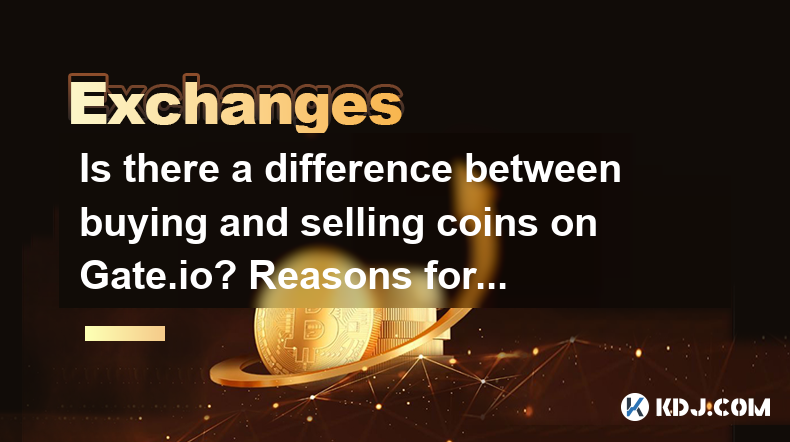
When engaging with cryptocurrencies on platforms like Gate.io, understanding the nuances of buying and selling coins, as well as the factors contributing to market price slippage, is crucial for making informed trading decisions. This article will delve into the differences between buying and selling on Gate.io and explore the reasons behind market price slippage.
The Basics of Buying and Selling on Gate.io
Gate.io is a popular cryptocurrency exchange that allows users to trade a wide variety of digital assets. The process of buying and selling coins on this platform involves different mechanisms and considerations, which can impact the outcome of your transactions.
Buying Coins on Gate.io: When you buy coins, you are essentially converting your fiat currency or other cryptocurrencies into the desired coin. The process involves selecting the coin you wish to purchase, choosing the trading pair (e.g., BTC/USDT), and entering the amount you want to buy. You can choose between market orders, which execute at the current market price, or limit orders, which allow you to set a specific price at which you want to buy.
Selling Coins on Gate.io: Selling coins involves converting your digital assets back into fiat currency or other cryptocurrencies. Similar to buying, you need to select the coin you wish to sell, choose the trading pair, and enter the amount you want to sell. You can opt for market orders or limit orders, depending on your trading strategy and the price you are willing to accept.
Key Differences Between Buying and Selling
While the mechanics of buying and selling on Gate.io may seem similar, there are key differences that traders should be aware of:
Liquidity: When buying, you need to ensure there is enough liquidity in the market to fulfill your order. If the liquidity is low, you might face higher slippage. On the other hand, when selling, you need to consider whether there are enough buyers at your desired price level.
Price Impact: Buying a large amount of a coin can drive the price up, while selling a large amount can drive the price down. This is due to the immediate impact of your order on the order book.
Fees: Gate.io charges different fees for buying and selling, depending on the trading pair and the user's trading volume. It's important to check the fee structure before executing your trades.
Market Sentiment: The overall market sentiment can affect buying and selling differently. Bullish markets might make it easier to sell at a higher price, while bearish markets might make it easier to buy at a lower price.
Understanding Market Price Slippage
Market price slippage refers to the difference between the expected price of a trade and the price at which the trade is actually executed. This can occur due to several reasons:
Order Book Depth: The depth of the order book, which shows the current buy and sell orders at different price levels, can impact slippage. If the order book is thin, large orders can cause significant price movements, leading to higher slippage.
Volatility: High volatility in the cryptocurrency market can lead to rapid price changes, making it difficult to execute trades at the desired price. This is particularly relevant for large orders that might take longer to fill.
Market Orders vs. Limit Orders: Using market orders can result in higher slippage because they are executed immediately at the best available price, which might be different from the price you expected. Limit orders, on the other hand, can help mitigate slippage by setting a specific price at which you are willing to trade.
Liquidity Providers: The presence of liquidity providers, such as market makers, can influence slippage. If there are fewer liquidity providers, the market might be less efficient, leading to higher slippage.
Strategies to Minimize Slippage
To minimize the impact of slippage on your trades, consider the following strategies:
Use Limit Orders: By setting a specific price at which you want to buy or sell, you can avoid the immediate execution of market orders and potentially reduce slippage.
Trade During High Liquidity Periods: Trading during times when the market is more active can help ensure that there are enough buyers and sellers to fulfill your orders at the desired price.
Split Large Orders: Instead of placing a single large order, consider splitting it into smaller orders. This can help minimize the impact on the market price and reduce slippage.
Monitor the Order Book: Keeping an eye on the order book can provide insights into the current market depth and help you make more informed trading decisions.
Practical Steps for Buying and Selling on Gate.io
To illustrate the process of buying and selling on Gate.io, let's go through the practical steps:
Buying Coins on Gate.io:
- Log into your Gate.io account.
- Navigate to the "Spot Trading" section.
- Select the coin you want to buy and the trading pair (e.g., BTC/USDT).
- Choose between a market order or a limit order.
- Enter the amount you want to buy.
- Review the order details and confirm the transaction.
Selling Coins on Gate.io:
- Log into your Gate.io account.
- Navigate to the "Spot Trading" section.
- Select the coin you want to sell and the trading pair (e.g., BTC/USDT).
- Choose between a market order or a limit order.
- Enter the amount you want to sell.
- Review the order details and confirm the transaction.
Frequently Asked Questions
Q: Can I set up stop-loss orders on Gate.io to protect against slippage?
A: Yes, Gate.io supports stop-loss orders, which can help you limit potential losses by automatically selling your coins when they reach a certain price. To set up a stop-loss order, navigate to the trading interface, select the coin and trading pair, and choose the "Stop-Limit" order type. Enter the stop price and the limit price at which you want the order to be executed.
Q: How does Gate.io's fee structure impact my buying and selling decisions?
A: Gate.io's fee structure varies based on the trading pair and your trading volume. Higher trading volumes can qualify you for lower fees, which can impact your overall profitability. When buying and selling, consider the fees associated with each transaction and how they might affect your net gains or losses.
Q: Are there any tools on Gate.io that can help me analyze market trends and reduce slippage?
A: Gate.io offers various tools, such as trading charts, order book data, and market depth indicators, which can help you analyze market trends and make more informed trading decisions. Utilizing these tools can help you identify optimal times to trade and potentially reduce slippage by understanding the current market conditions.
Q: Can I use Gate.io's mobile app for buying and selling coins, and does it support all the features available on the desktop version?
A: Yes, Gate.io offers a mobile app that allows you to buy and sell coins on the go. The mobile app supports most of the features available on the desktop version, including market and limit orders, stop-loss orders, and access to trading charts. However, some advanced features might be more accessible on the desktop version due to screen size limitations on mobile devices.
Disclaimer:info@kdj.com
The information provided is not trading advice. kdj.com does not assume any responsibility for any investments made based on the information provided in this article. Cryptocurrencies are highly volatile and it is highly recommended that you invest with caution after thorough research!
If you believe that the content used on this website infringes your copyright, please contact us immediately (info@kdj.com) and we will delete it promptly.
- Bitcoin, Kiyosaki, and Acquisition: A Perfect Storm?
- 2025-07-05 22:35:14
- Cardano vs. Solana: The $500 Dream and a Payments Disruptor
- 2025-07-05 22:50:13
- Subway Surfers on PC: Level Up Your Experience, No Train Ticket Needed!
- 2025-07-05 22:35:14
- Ray Dalio, Bitcoin, and Disruptions: Navigating the Future of Finance
- 2025-07-05 23:10:13
- Yu Darvish's Padres Return: A Coin Flip?
- 2025-07-05 22:50:13
- Undead Blocks Rises Again: Avalanche Blockchain, Blackhole Partnership, and a Roadmap to 2026
- 2025-07-05 22:55:12
Related knowledge
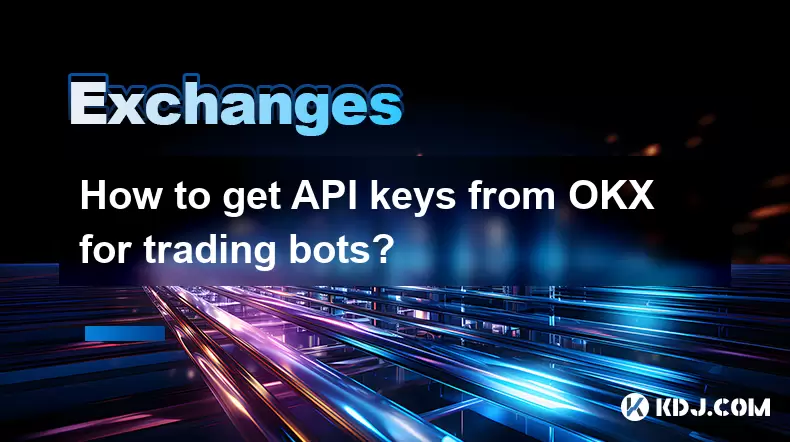
How to get API keys from OKX for trading bots?
Jul 03,2025 at 07:07am
Understanding API Keys on OKXTo interact with the OKX exchange programmatically, especially for building or running trading bots, you need to obtain an API key. An API (Application Programming Interface) key acts as a secure token that allows your bot to communicate with the exchange's servers. On OKX, these keys come with customizable permissions such ...
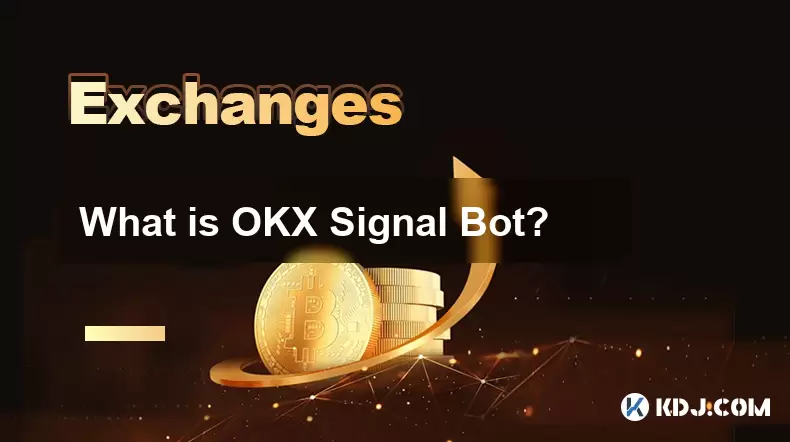
What is OKX Signal Bot?
Jul 02,2025 at 11:01pm
Understanding the Basics of OKX Signal BotThe OKX Signal Bot is a feature within the OKX ecosystem that provides users with automated trading signals and execution capabilities. Designed for both novice and experienced traders, this bot helps identify potential trading opportunities by analyzing market trends, technical indicators, and historical data. ...
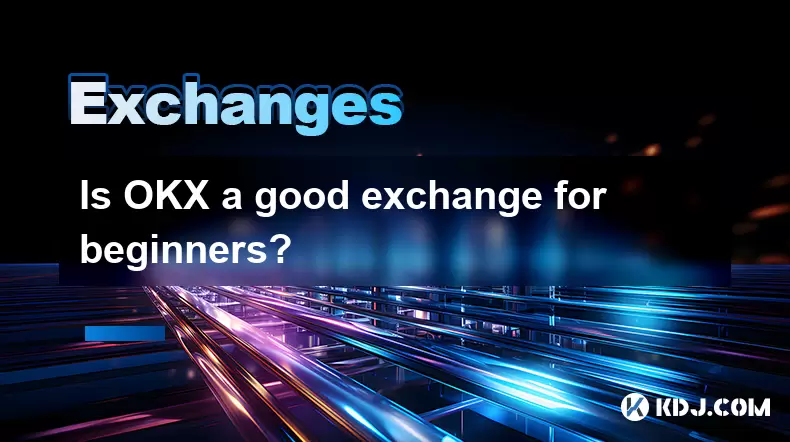
Is OKX a good exchange for beginners?
Jul 03,2025 at 05:00pm
What Is OKX and Why Is It Popular?OKX is one of the leading cryptocurrency exchanges globally, known for its robust trading infrastructure and a wide variety of digital assets available for trading. It supports over 300 cryptocurrencies, including major ones like Bitcoin (BTC), Ethereum (ETH), and Solana (SOL). The platform has gained popularity not onl...
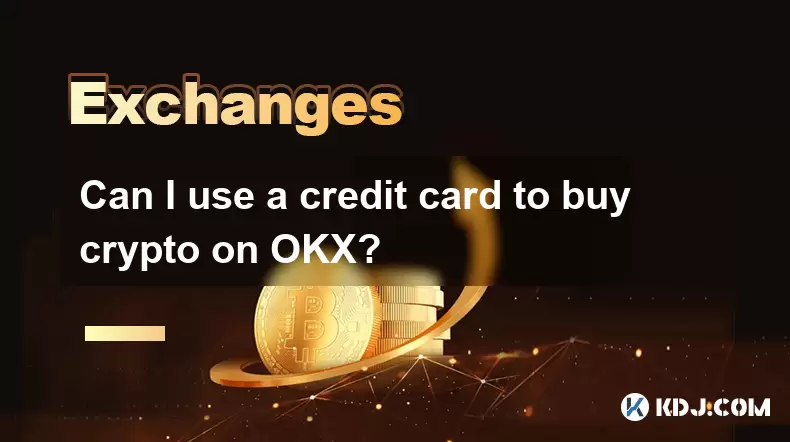
Can I use a credit card to buy crypto on OKX?
Jul 04,2025 at 04:28am
Understanding OKX and Credit Card PaymentsOKX is one of the leading cryptocurrency exchanges globally, offering a wide range of services including spot trading, derivatives, staking, and more. Users often wonder whether they can use a credit card to buy crypto on OKX, especially if they are new to the platform or looking for quick ways to enter the mark...
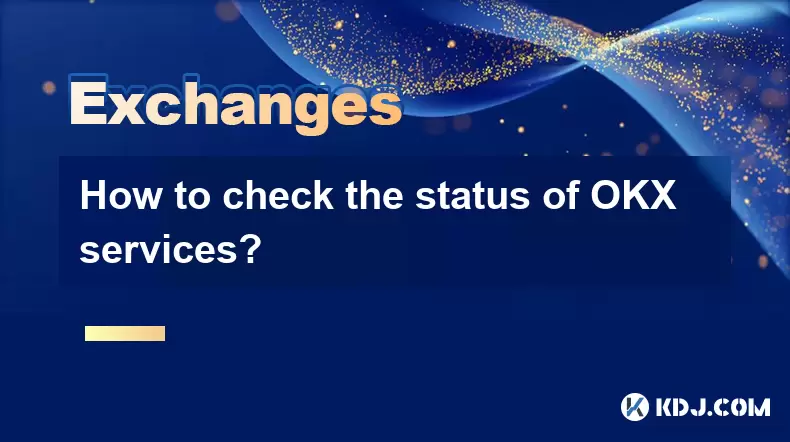
How to check the status of OKX services?
Jul 02,2025 at 11:14pm
What is OKX, and Why Checking Service Status Matters?OKX is one of the world’s leading cryptocurrency exchanges, offering services such as spot trading, futures trading, staking, and more. With millions of users relying on its platform for daily transactions, it's crucial to know how to check the status of OKX services. Downtime or maintenance can affec...
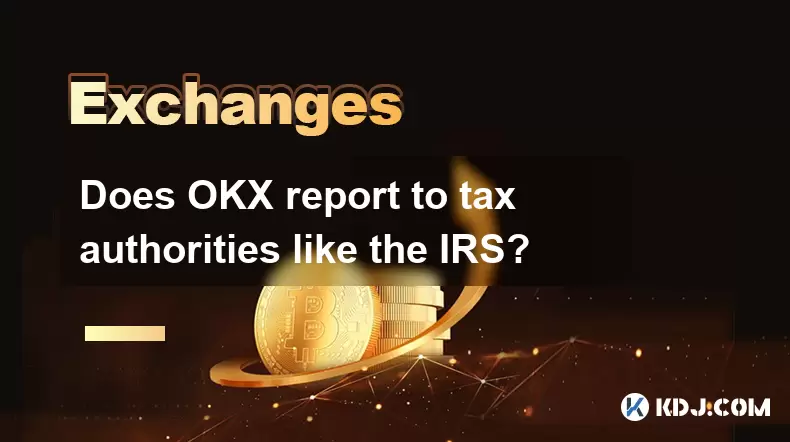
Does OKX report to tax authorities like the IRS?
Jul 03,2025 at 03:14pm
Understanding the Role of Cryptocurrency Exchanges in Tax ReportingCryptocurrency exchanges play a crucial role in facilitating digital asset transactions, but their responsibilities extend beyond trading and custody. As regulatory scrutiny intensifies globally, users are increasingly concerned about whether platforms like OKX report to tax authorities ...

How to get API keys from OKX for trading bots?
Jul 03,2025 at 07:07am
Understanding API Keys on OKXTo interact with the OKX exchange programmatically, especially for building or running trading bots, you need to obtain an API key. An API (Application Programming Interface) key acts as a secure token that allows your bot to communicate with the exchange's servers. On OKX, these keys come with customizable permissions such ...

What is OKX Signal Bot?
Jul 02,2025 at 11:01pm
Understanding the Basics of OKX Signal BotThe OKX Signal Bot is a feature within the OKX ecosystem that provides users with automated trading signals and execution capabilities. Designed for both novice and experienced traders, this bot helps identify potential trading opportunities by analyzing market trends, technical indicators, and historical data. ...

Is OKX a good exchange for beginners?
Jul 03,2025 at 05:00pm
What Is OKX and Why Is It Popular?OKX is one of the leading cryptocurrency exchanges globally, known for its robust trading infrastructure and a wide variety of digital assets available for trading. It supports over 300 cryptocurrencies, including major ones like Bitcoin (BTC), Ethereum (ETH), and Solana (SOL). The platform has gained popularity not onl...

Can I use a credit card to buy crypto on OKX?
Jul 04,2025 at 04:28am
Understanding OKX and Credit Card PaymentsOKX is one of the leading cryptocurrency exchanges globally, offering a wide range of services including spot trading, derivatives, staking, and more. Users often wonder whether they can use a credit card to buy crypto on OKX, especially if they are new to the platform or looking for quick ways to enter the mark...

How to check the status of OKX services?
Jul 02,2025 at 11:14pm
What is OKX, and Why Checking Service Status Matters?OKX is one of the world’s leading cryptocurrency exchanges, offering services such as spot trading, futures trading, staking, and more. With millions of users relying on its platform for daily transactions, it's crucial to know how to check the status of OKX services. Downtime or maintenance can affec...

Does OKX report to tax authorities like the IRS?
Jul 03,2025 at 03:14pm
Understanding the Role of Cryptocurrency Exchanges in Tax ReportingCryptocurrency exchanges play a crucial role in facilitating digital asset transactions, but their responsibilities extend beyond trading and custody. As regulatory scrutiny intensifies globally, users are increasingly concerned about whether platforms like OKX report to tax authorities ...
See all articles

























































































